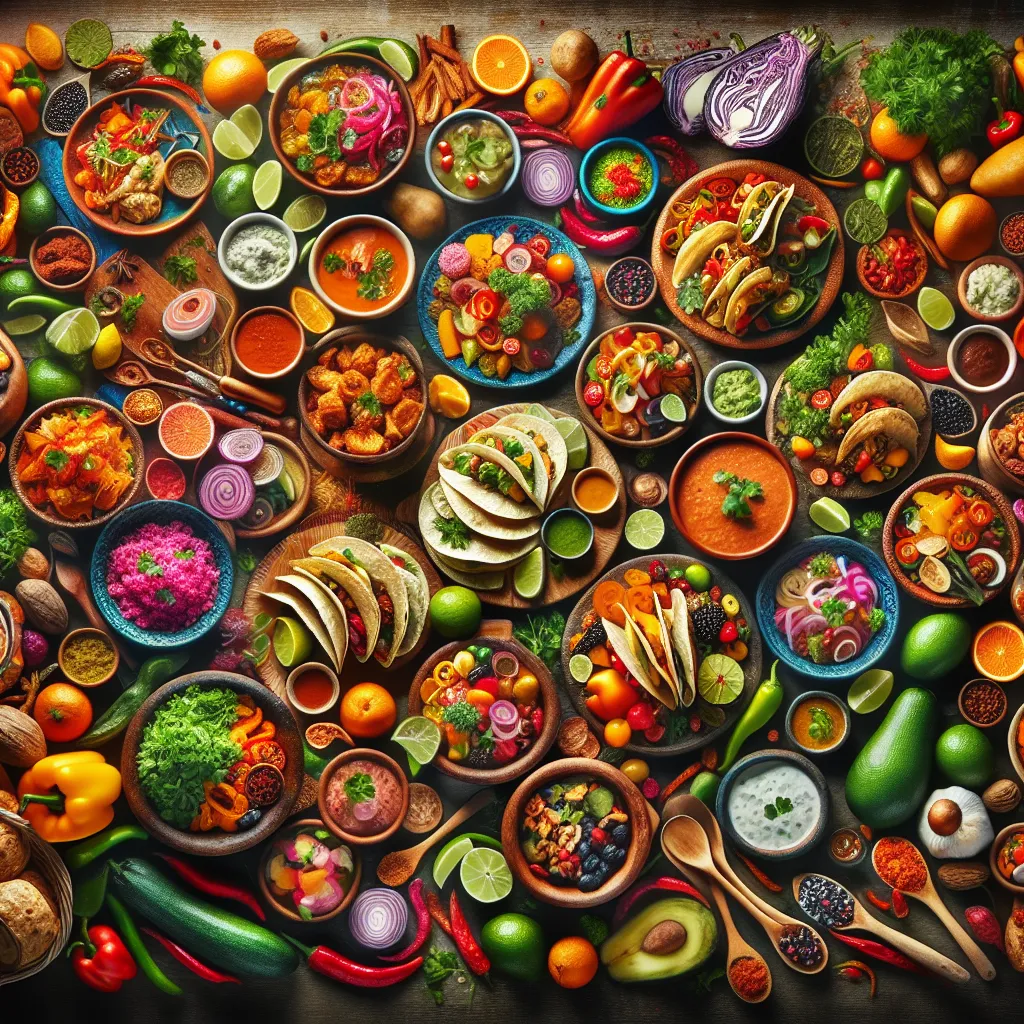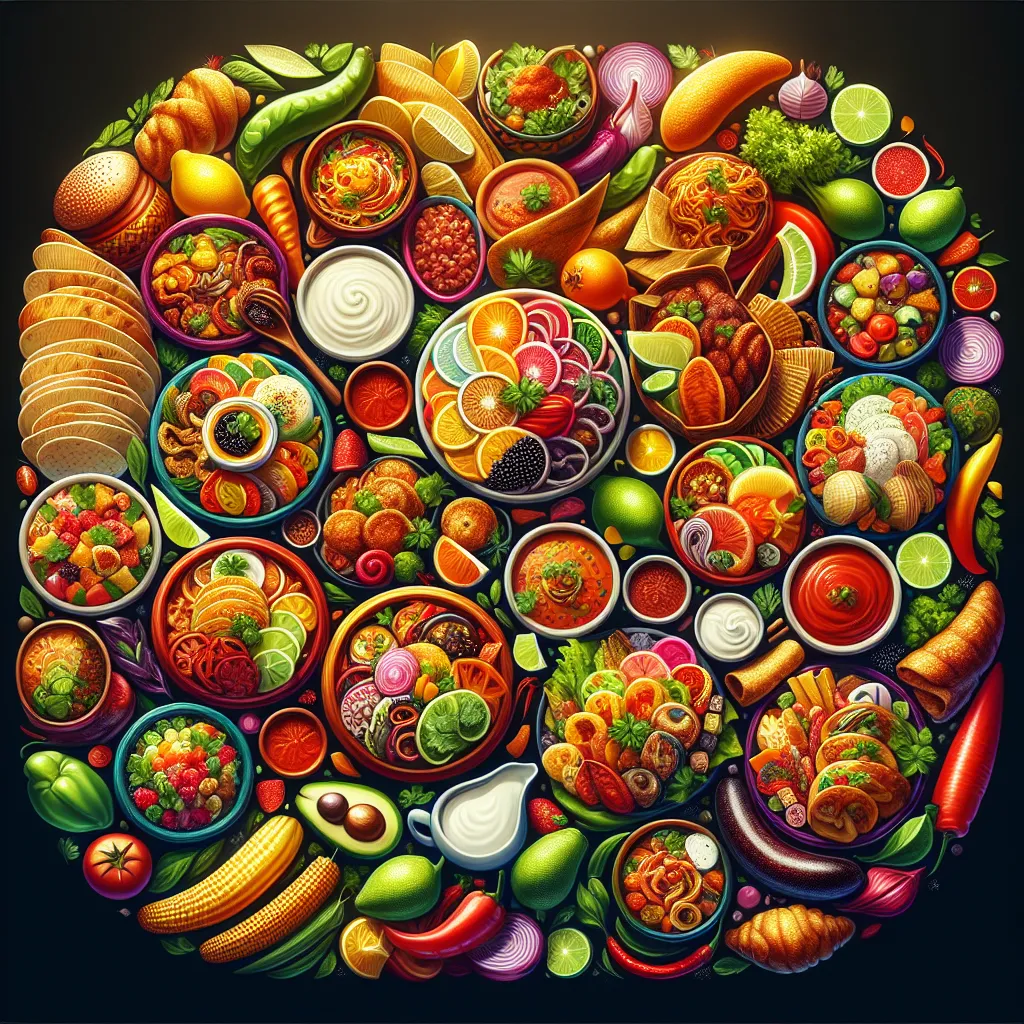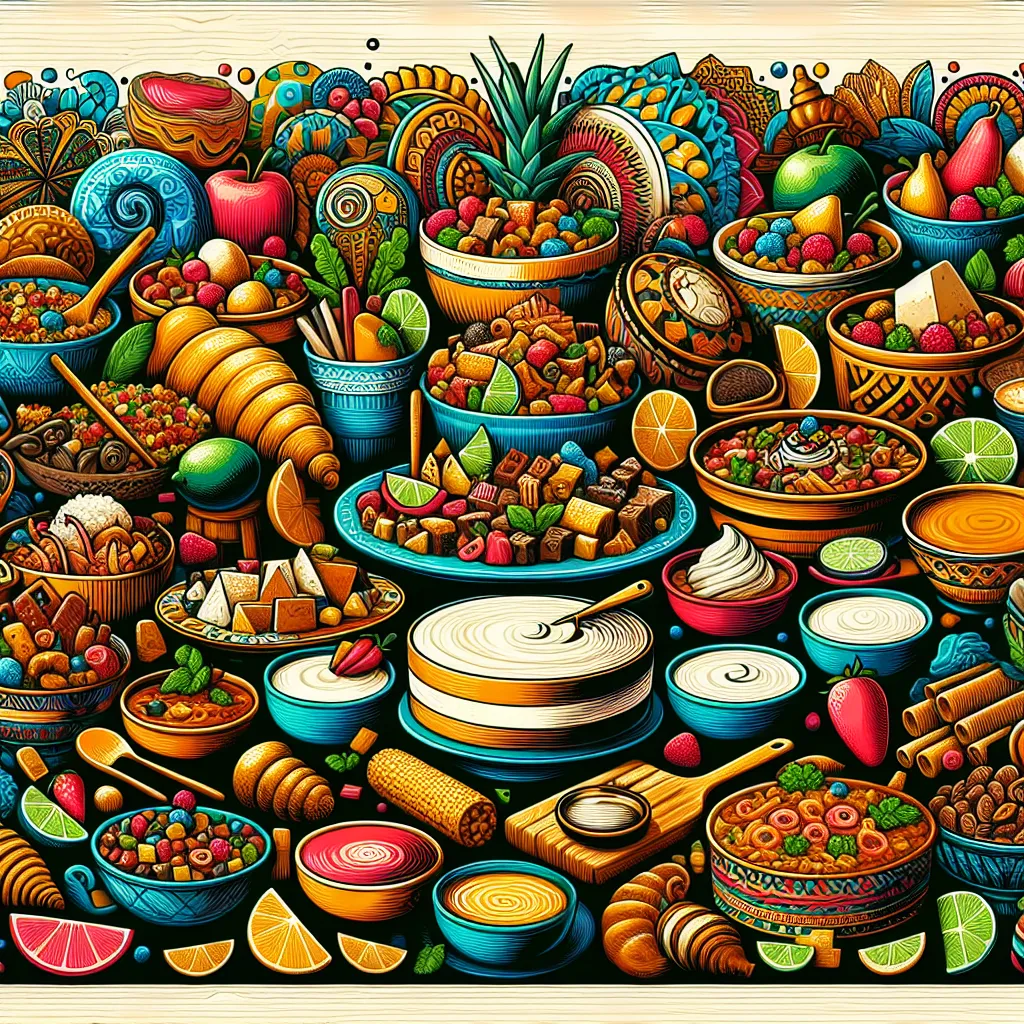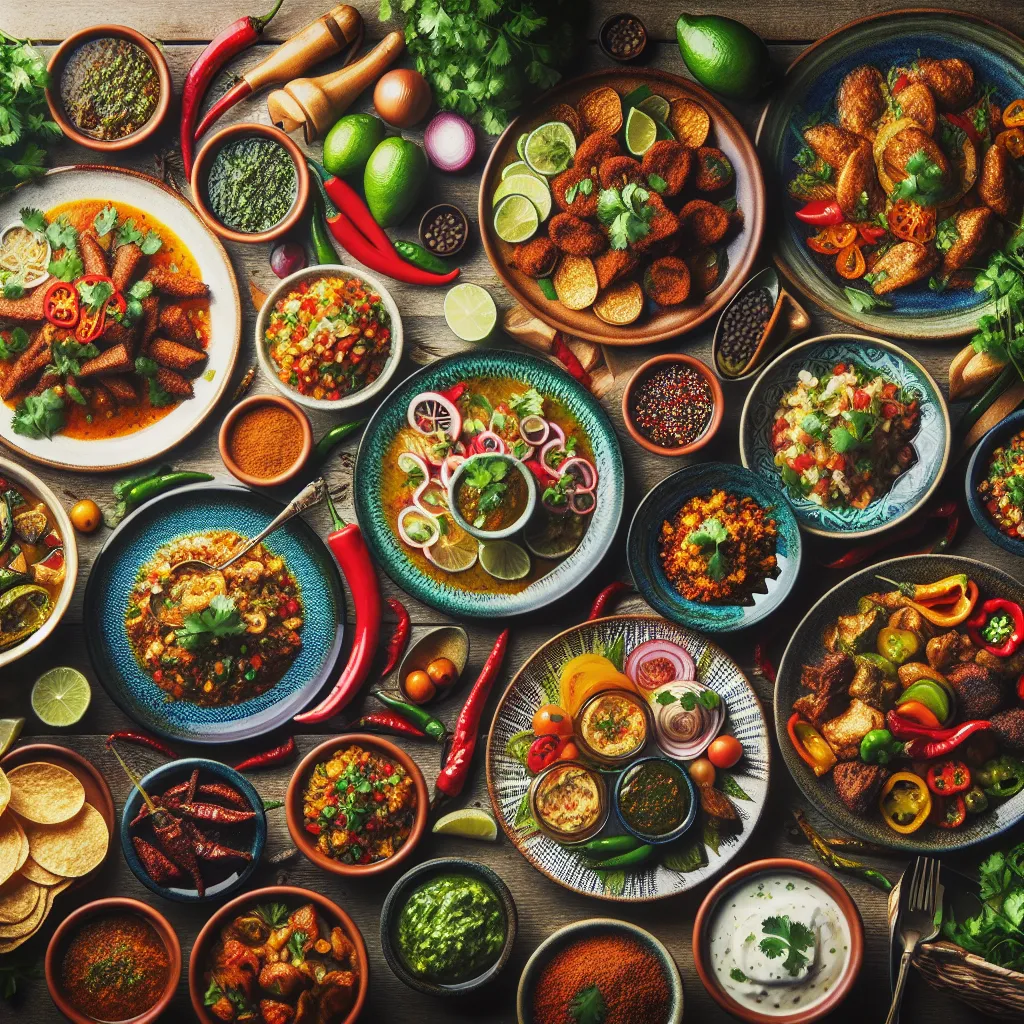The Diversity of Latin American Culinary Traditions
Latin American cuisine is as diverse as the continent itself, with each region boasting its own distinctive flavors and culinary traditions. From the bold and spicy dishes of Mexico to the rich and savory creations of Argentina, the tapestry of Latin American food is as varied as the landscapes that define the region.
In Mexico, the cuisine is characterized by the use of vibrant spices such as cumin, chili, and oregano, creating dishes that are bursting with flavor and heat. Staple ingredients like corn, beans, and peppers form the foundation of many traditional Mexican dishes, with each region adding its own unique twist to classic recipes.
Meanwhile, in Central America, you will find a fusion of indigenous ingredients and Spanish influences, resulting in dishes like tamales, pupusas, and gallo pinto. The use of tropical fruits, root vegetables, and fresh seafood contributes to the bright and refreshing flavors that are emblematic of the region.
Further south, the culinary traditions of countries like Peru and Ecuador are shaped by the bounty of the Pacific Ocean and the Andes Mountains. Ceviche, a dish of raw fish marinated in citrus juices and spices, and roasted cuy (guinea pig) are just a few examples of the diverse and unconventional delicacies you can find in these countries.
When exploring the diverse culinary traditions of Latin America, it becomes evident that each region has its own unique ingredients, cooking techniques, and flavor profiles that contribute to the rich tapestry of Latin American cuisine.
A Culinary Journey Through Latin America
Exploring the rich flavors of Latin cuisine takes us on a culinary journey through Latin America, where each region offers a unique and diverse range of ingredients, cooking techniques, and traditional dishes. From the tangy ceviches of Peru to the flavorful moles of Mexico, Latin American cuisine is a reflection of the rich cultural heritage and geographical diversity of the region.
Starting our journey in Mexico, we encounter a vibrant tapestry of flavors that include the earthy cacao used in Oaxacan moles, the tangy citrus of Yucatecan recados, and the smoky aromas of chipotle chilies. Moving south to Peru, the coast offers an abundance of fresh seafood, leading to the creation of refreshing and zesty ceviches, while the Andean highlands introduce us to comforting stews like the hearty and spicy rocoto relleno.
Continuing our exploration, we arrive in Argentina, where the famous asado, or barbecue, is a central element of the culinary tradition. The succulent meats cooked over open flames paired with tangy chimichurri sauce showcase the country’s love for bold flavors and communal dining experiences. Traveling further north to the Caribbean, we encounter the vibrant and aromatic dishes of Cuba and the Dominican Republic, where the use of tropical fruits, aromatic herbs, and slow-cooking techniques create dishes like the iconic ropa vieja and mofongo.
With each stop on our culinary journey through Latin America, we discover the passion and creativity that define the region’s cuisine. The use of indigenous ingredients, vibrant spices, and complex cooking methods captivates the senses and invites us to savor the diverse and rich flavors found throughout Latin America.
The Art of Cooking with Latin American Ingredients
Exploring the rich flavors of Latin cuisine is an exhilarating journey through a vibrant tapestry of ingredients and culinary techniques that have been honed over centuries. At the heart of this culinary tradition lies the art of cooking with Latin American ingredients, which brings together a diverse range of flavors, textures, and aromas. From the fiery heat of chilies to the earthy richness of cacao, Latin American ingredients offer a kaleidoscope of tastes that inspire and captivate the senses.
Central to the art of cooking with Latin American ingredients is the concept of honoring the natural integrity of each component. Whether it’s the colorful array of fresh vegetables, the abundance of tropical fruits, or the wealth of indigenous grains and legumes, Latin American cuisine celebrates the innate flavors of these ingredients. Whether in a traditional Mexican mole sauce that balances the bitterness of chocolate with the smokiness of roasted peppers, or a Peruvian ceviche that showcases the delicate sweetness of seafood against the backdrop of tangy citrus and fiery rocoto peppers, the artistry lies in allowing these ingredients to shine.
Another hallmark of cooking with Latin American ingredients is the artful blend of spices and herbs that elevate the flavors of dishes. From the earthy warmth of cumin and the floral notes of cilantro to the smoky depth of paprika and the citrusy zing of achiote, the spice cupboard of Latin American cooking is a treasure trove of culinary delights. These spices and herbs not only add layers of complexity to dishes but also reflect the diverse cultural influences that have shaped Latin American cuisine over the centuries.
Furthermore, the art of cooking with Latin American ingredients is deeply intertwined with the concept of communal dining and sharing. Whether it’s the convivial atmosphere of a Mexican fiesta where tamales and enchiladas are passed around the table, or the joyous celebration of Brazilian churrasco where tender meats are carved and shared among friends, Latin American cuisine embodies the spirit of togetherness and conviviality.
In conclusion, the art of cooking with Latin American ingredients is a celebration of diversity, creativity, and conviviality. It is a vibrant tapestry that weaves together the richness of ingredients, the artistry of spice blends, and the joy of communal dining. Exploring this culinary tradition offers a profound understanding of the cultural heritage, traditions, and flavors that have shaped Latin American cuisine into the rich tapestry it is today.
Embracing the Vibrant Flavors of Latin Cuisine
Embracing the vibrant flavors of Latin cuisine is an exhilarating journey that delves into the rich tapestry of Latin American culinary heritage. From the fiery spices of Mexico to the tangy citrus of Peru, Latin cuisine is a celebration of diverse and bold flavors that have captivated food enthusiasts worldwide. The heart of Latin cuisine lies in the fusion of indigenous ingredients with Spanish, African, and indigenous influences, resulting in a tantalizing array of dishes that showcase the region’s cultural complexity.
One of the defining features of Latin cuisine is its emphasis on fresh and aromatic ingredients. The use of fresh herbs like cilantro, oregano, and culantro, combined with aromatic spices such as cumin, paprika, and achiote, infuses every dish with an explosion of flavors that dance on the palate. This celebration of fresh and bold flavors is further enhanced by a diverse range of cooking techniques, including grilling, slow braising, and frying, which add depth and complexity to dishes.
Furthermore, the vibrant flavors of Latin cuisine are complemented by a diverse array of tropical fruits and vegetables. The use of ingredients like avocados, plantains, mangoes, and chilies adds a dimension of sweetness, acidity, and heat to dishes, creating a sensory experience that is both complex and satisfying. Additionally, the art of using citrus fruits such as limes and bitter oranges to marinate meats and seafood brings a refreshing contrast to the savory elements of Latin dishes.
Embracing the vibrant flavors of Latin cuisine is not just about the food itself, but also the convivial atmosphere that accompanies it. It’s about savoring a traditional Mexican mole poblano, indulging in a Peruvian ceviche, or relishing the succulence of a Cuban ropa vieja, while embracing the cultural heritage and stories behind each dish.
In conclusion, the vibrant flavors of Latin cuisine encapsulate a diverse and complex culinary journey that celebrates the rich tapestry of Latin American heritage. From the bold spices to the tropical fruits, every element harmonizes to create an unforgettable culinary experience that is a testament to Latin America’s gastronomic prowess.




